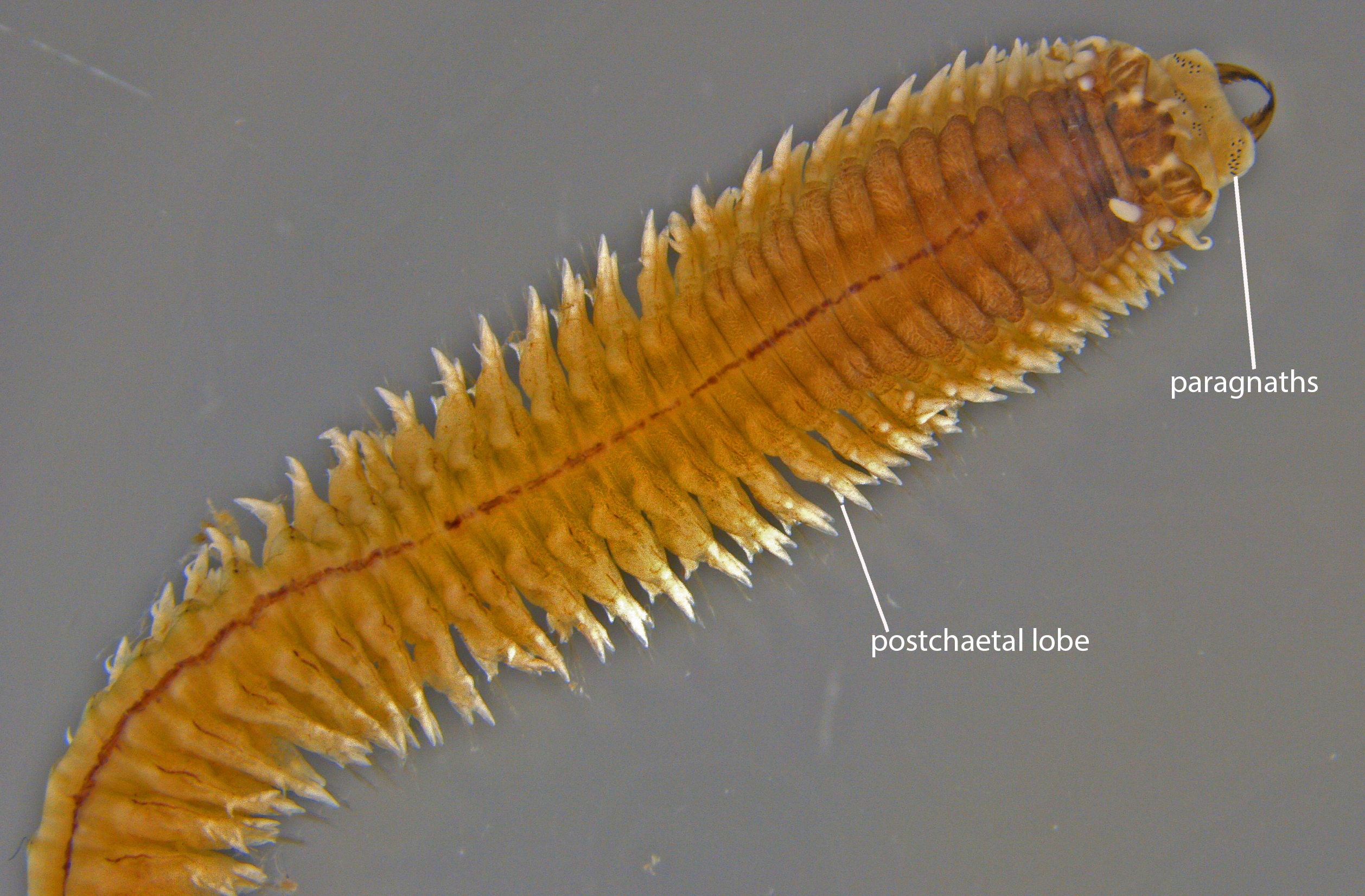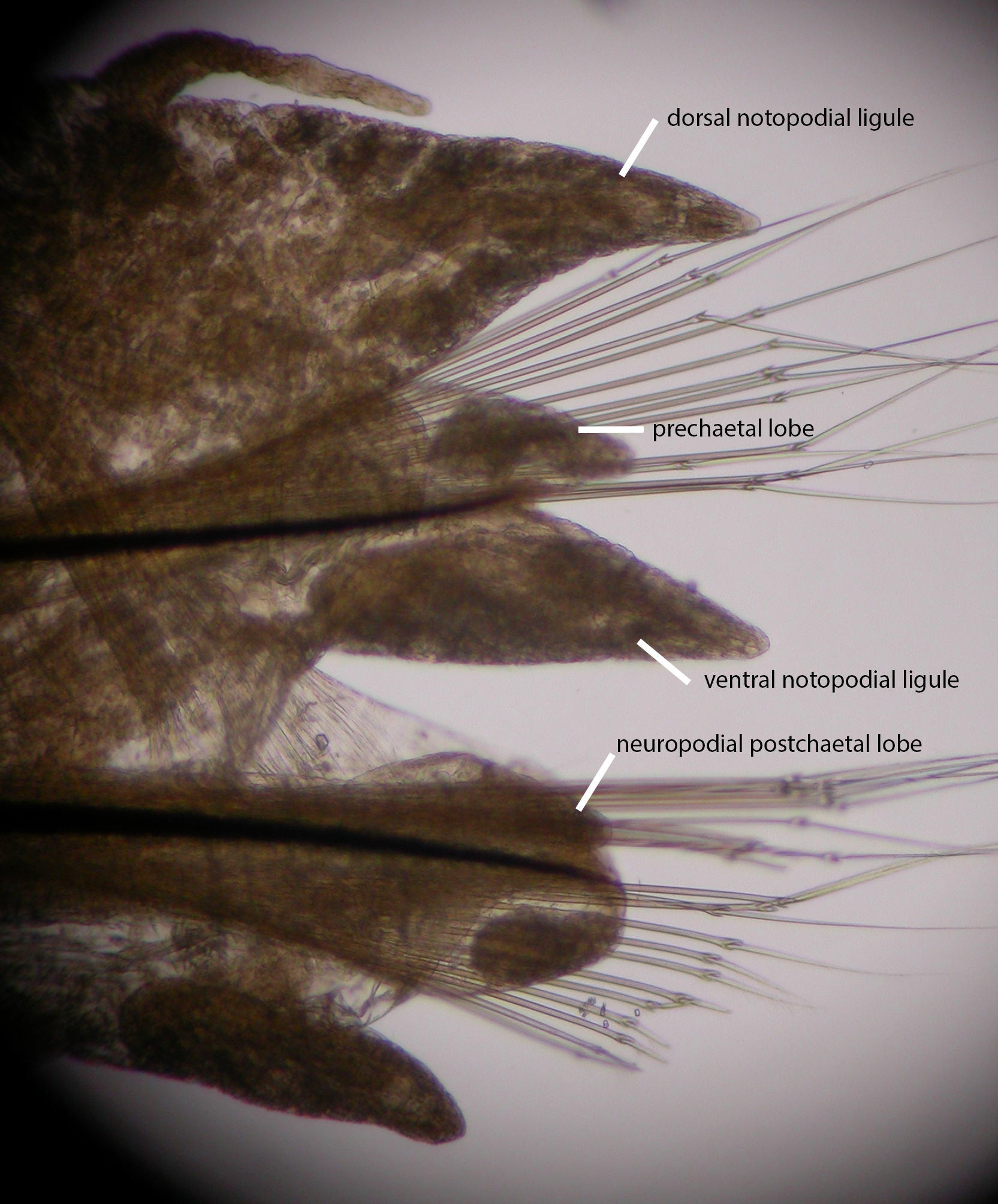Hediste diversicolor
Hediste diversicolor, anterior end. Anterior to the head is the eversible pharynx with jaws and black paragnaths (teeth). Number and position of paragnaths are important characters for identification. On the parapodia the characteristic postchaetal lobe in the neuropodium is visible.
Hediste diversicolor is common in soft sediments in the littoral zone. It can live in areas with low salinity and is thus common in estuaries.
- Innhold
- Measurements
- Characteristics
- Look-alikes
- Biology, ecology and behaviour
- Habitat
- Recommended citation
Measurements
Up to 15 cm long, but usually between 3–10 cm.
Characteristics
Hediste diversicolor, parapodium from chaetiger 20, showing parapodial ligules and lobes.
The blood vessel on the dorsal side is usually clearly visible. It is highly variable in colour, from light yellowish to dark green. Tentacular cirri reach back to about chaetiger 3–5. It has three lobes in the upper part of the parapodia, one small lobe between two larger ligules. Visible under high magnification are characteristic large simple chaetae in the lower part of the parapodia in posterior chaetigers.
Look-alikes
This is the only species in Nordic waters with simple chaetae. With three lobes (two long ligules and one small lobe between) in the upper part of parapodia it can be confused with Alitta virens, but A. virens has enlarged leaf-like dorsal ligules in all parapodia, while in H. diversicolor this ligule is similar to the lower ligules. Small specimens of A. virens have not developed the enlarged dorsal parapodial ligule, in which it can be distinguished from H. diversicolor. They can however be distinguished by a small lobe behind the chaetae (a postchaetal lobe) in the lower part of the parapodia. In A. virens this lobe is present in all parapodia throughout the specimen, while in H. diversicolor it is only present in the first 23–28 chaetigers. The two species are often found together in soft sediment in the littoral zone.
Biology, ecology and behaviour
Hediste diversicolor can be found in the littoral zone digging burrows in soft sediment, and can also be found under rocks in soft sediment areas. Size of burrows increase with body size and can go 20 cm into the sediment. It feeds on algae, plankton and small benthic animals. Specimens make a mucous net at the entrance of the burrow where food is collected, then the net is consumed. Eggs are placed in the burrows and brooded until hatched to free-swimming larvae. This species does not swarm.
Habitat
The species lives in the littoral zone, in soft sediments with mud and sand. It can live in water with salinities as low as 2 psu and is therefore also common in estuaries.
Recommended citation
Bakken T. Hediste diversicolor (O.F. Müller, 1776). www.artsdatabanken.no/Pages/313086. Downloaded <year-month-day>.

